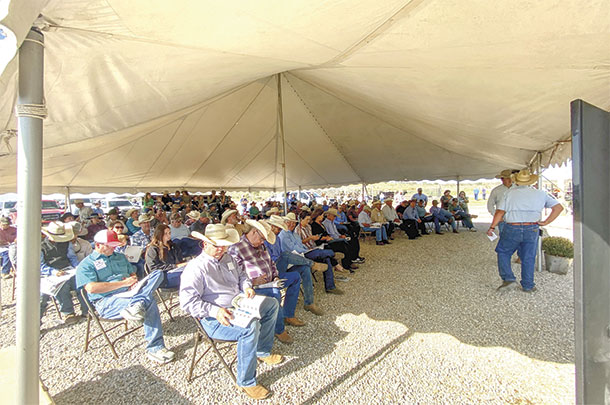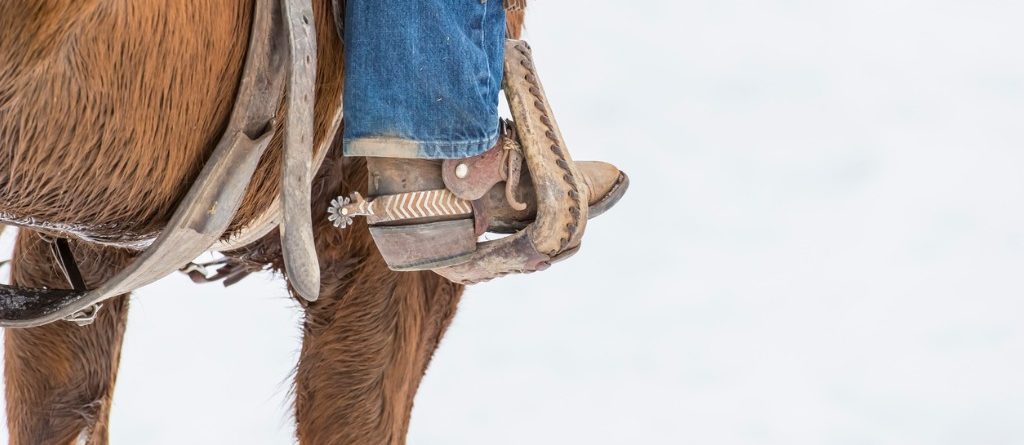Once characterized by handshakes and in-person greetings, the process to purchase bulls is changing swiftly to include more technology and less sitting elbow-to-elbow.
For both buyers and sellers, the purchasing process was tested in 2020, exposing gaps in internet speeds and forcing new types of conversations throughout the ranching communities.
But what are the rules these days? How do you buy and sell a bull in a pandemic world?
These five essential lessons and takeaways surfaced in 2020 and will have an impact on the industry moving forward.
Plan your sale or purchase strategically
“Even in a non-pandemic year, before you get to the bull sale it’s important to know what you are looking for in a bull,” Shannon Williams, University of Idaho Agriculture and Natural Resources Extension educator, says. “Get ahold of the catalog before you get to the bull sale and know which bulls you want before you go.”
It’s critical to know as much as you can about the bulls you’d like to purchase. Robert Wells, Noble Research Institute livestock consultant, says he requests as much data as possible ahead of time and urges sellers to make the information easily downloadable on their websites.
“I try to get there a few days in advance to look at the bulls and where they’ve been raised. That’ll tell you a lot,” Wells says. “Are they in a dirt lot pen, or are they able to get out and exercise? From a COVID standpoint, get there early and walk through pens when you won’t have contact with people.”
Wells says he’s been cautious about carrying a bottle of sanitizer with him to use after opening and closing high-touch gates.
He’s also made it a practice to arrive at the sale early so he can create space around his seating area. If there’s an open door, staying close to the fresh air has become a new priority.
“Do your homework in advance, so you don’t have to spend too much time in the pens or sale barns and, of course, wear your mask,” Wells says. “Remember, the mask will help you and the others who are in the barn with you. You never know the circumstances of the guy down the way who you could potentially harm unknowingly.”
Takeaway: Get to the bull sale early to walk the pens. If you are worried about your health, send someone in your place or attend the auction online. Sellers should be conscious of spacing out seating and providing sanitizer and masks.
Use technology to your advantage
While online platforms for sales like LiveAuctions.TV have been around for decades, a socially distanced year made more and more venues turn to technology.
“COVID hit in the middle to the end of sale season, so a lot of the sales were already going,” says Katie Colyer, LiveAuctions.TV representative. “It was kind of too late for a lot of them to get on the calendar this year, but a lot of the county fairs moved online to be flexible.”
Colyer says the increase in students studying at home made the internet speed slower in a few places, but most buyers could use their cellphone signal without fail.
Slow internet can cause a loss for both the buyer and the seller.
“They always say the runner-up bidder is just as important as the winning one,” Wells says. “I tried to buy some cattle for Noble on a lesser-known online sale platform, and even though we had as high-speed internet as you could get, I had difficulty keeping up with the sale and being able to submit bids due to connectivity issues at the sale site. A seller lost some opportunity because of the issues with their online system.”
Wells says it’s essential to make sure you do your homework and use a third-party provider that has been run through multiple sales to ensure you aren’t losing out or frustrating buyers.
“It may cost you a little more,” he says. “But what would it cost you in lost potential bidders and sales?”
Takeaway: For both buyers and sellers, make sure you have a stable and high internet speed connection available, and if you are in a rural area, you may need to move somewhere else for a better connection.
Start marketing early
Catalogs will continue to be an important part of selling bulls. Still, sellers should continue to embrace taking short video clips of their bulls ahead of time to share with potential buyers and are encouraged to use their websites and social media channels to their fullest potential.
“From a seller’s perspective, they should be asking ‘How can I market my bulls to the biggest audience?’” Williams says. “Get the info out early and have photos of the bulls on the website so buyers can confirm it’s what they want visually.”
Colyer says sellers should schedule their online sales with their technology platform at least a month in advance.
“Get it scheduled so you can get it in your catalog,” she says. “Give people as much information as possible. Online is just an added venue.”
Takeaway: Marketing will continue to be extremely important. Bull sale organizers should provide clear and accurate information before and during the sale.
Speak up and speak often
Whether bull sales continue to offer an in-person experience or move entirely online, communication for both buyers and sellers remains critical.
For sellers, let your potential purchasers be aware of the expectations before the event. Provide clear and truthful information and be willing to accommodate a variety of sale methods.
“Add an online component to the live sale so they can buy both ways,” Williams says. “If you are a small seedstock producer, it may be best to offer a private treaty where you set up an appointment if you are in a hotbed area and everyone interested in a bull goes in a lottery to limit the crowds.”
Communicating expectations for health and safety guidelines should continue throughout 2021. If you plan to purchase a bull in another state in person, be aware of state guidelines and whether you’ll be required to quarantine for a period of time before you can go do business.
Wells says understanding the seller’s guarantees is vital if you are purchasing a bull online.
“I ask for a sight-unseen guarantee,” he says. “I want to confirm that bull when it arrives. It needs to be said that the buyer has the right upon delivery to reject the animal and nobody is owed.”
Having valid certificates of veterinary inspection and communicating reasonable delivery dates and expectations for how long a bull will be on the trailer is important, Wells says.
“In a pandemic world or not, if the seller will deliver that bull at a reasonable price, let them do that,” he says.
Takeaway: Set expectations for your event or interactions early and often so people know the guidelines. If buying sight unseen, be up-front with your expectations and contract requirements.
If 2020 has given ranchers anything to take into 2021, it’s the confirmation of the industry’s ability to be nimble and adapt quickly. Flexibility will continue to be an essential theme in upcoming interactions, and if you’re going to provide donuts at an in-person sale – it’s a good idea to offer them individually wrapped. ![]()
![]()
PHOTO: The fall sale of the R.A. Brown Ranch included outdoor tents where visitors could be spaced in seats and had proper ventilation. Photo courtesy of R.A. Brown Ranch.









